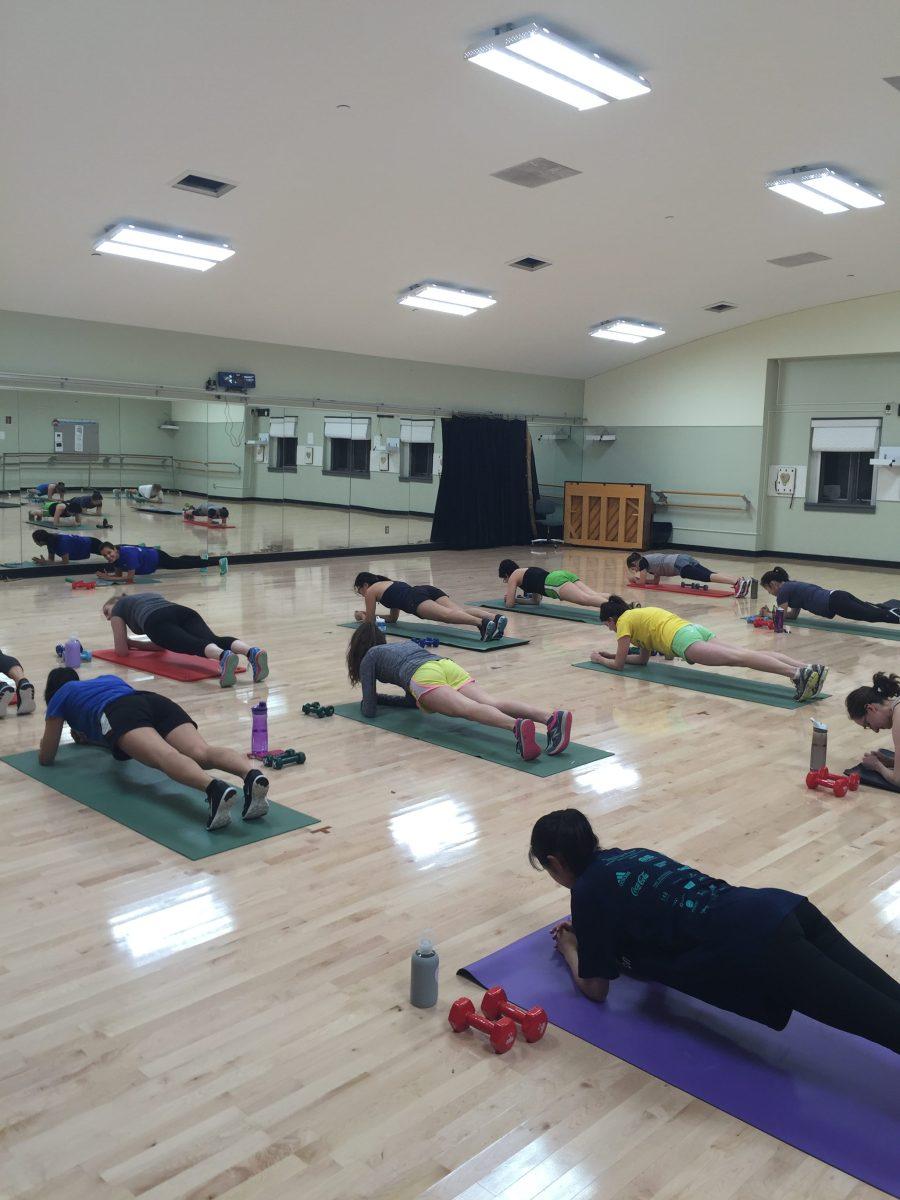Upon leaving for PiYo, I lamented to a friend that I was woefully out of shape. “It’s ‘Pilates- Yoga’! How hard could it be?” she responded. Although I was encouraged by those words at beginning of the class, by the end of the class, soaked in my own sweat, I realized I had been right to be nervous.
Created by Chalene Johnson, PiYo aimsto create a full body workout by combining the benefits of Pilates and Yoga with an extra cardiovascular burn. As advertised by its website, PiYo combines the “The Muscle Scultping of Pilates” with the “the flexibility of yoga” and “non-stop, fluid movement”. The PiYo DVD program contains a 60 day program with 25-40 minute workouts six days a week.
On the PiYo website, customers can buy the DVDs and companion workout booklet for $59.85. However, Wellesley students can attend PiYo classes for free on Tuesdays and Thursdays from 8-9 pm, taught by Cassandra Allen ’18. “I teach PiYo because I believe that, as a cardio-enthusiast, it can be difficult to find strength training/flexibility courses that keep you engaged the whole time,” said Allen ’18 about the motivation behind teaching PiYo.
I attended a PiYo class at Wellesley on a Thursday night. It was very well attended. Students came with water bottles and most borrowed one of the communal yoga mats offered by the KSC. Allen mentioned that class sizes vary between 25 and 40.
Allen started the class by explaining a few of the more complex moves. One criticism I have of the overall PiYo program is that it lacks some of the fluid choreography found in other exercise classes such as Zumba or Step. The more complicated moves often required a few of the more complex moves. One criticism
I have of the overall PiYo program is that it lacks some of the fluid choreography found in other exercise classes such as Zumba or Step. The more complicated moves often required a few of the more complex moves. One criticism I have of the overall PiYo program is that it lacks some of the fluid choreography found in other exercise classes such as Zumba or Step.The more complicated moves often required an element of extra thought which may put the student behind the rhythm of the class and instructor.
PiYo is a challenge starting from the warm up. Choreography began with a combination of lunges and arm pumps and got progressively harder from there. The PiYo choreography taught by Allen includes dozens of pushups and planks. The PiYo workout reminded me of why I ignore upper body workouts and why that’s a problem. There were squats and ab circuits.
During the aptly named “Full Body Circuit”, students began taking breaks intermittently. It was during this part of the workout that I asked myself why I was torturing myself in the name of journalism. However, there was a slight break during the “Flow” portion of the class as well as two separate water breaks during the class, which were sorely needed.
PiYo is the wrong workout for dance fitness enthusiasts. The movements were often not exactly in line with the music. In addition, due to the limits of the Wellesley KSC facilities, the music was played through a speaker provided by the instructor. PiYo would be most appealing to those genuinely looking to tone and sweat.
On the goals of the class, Allen said, “I hope that students find my class both fun and beneficial! I hope that they come out of every class feeling like they’ve had a good workout, and that they can see themselves becoming stronger and more flexible. I want working out to be a fun experience and hope that PiYo affords them exactly that!”
As a person whose workout usually consists of reading a magazine of the elliptical, PiYo was a shock to my system that not only challenged me, but also made me aware of fitness goals I had yet to attain.




